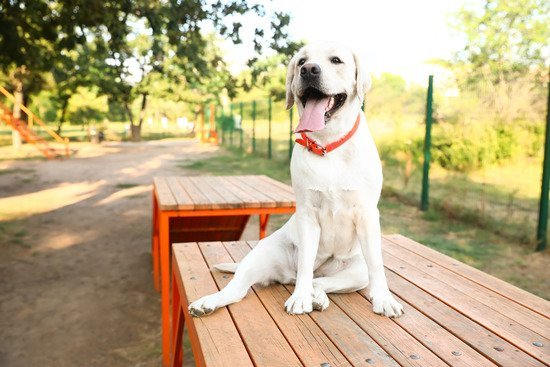Are you struggling with how to leash train a dog? Leash training is an essential part of owning a dog, and it plays a crucial role in shaping your pet’s behavior and ensuring their safety. In this article, we will guide you through the process of leash training, from understanding its importance to dealing with common challenges that may arise along the way.
Leash training is not just about teaching your dog to walk on a leash; it also helps in establishing boundaries, building trust, and enhancing the bond between you and your furry friend. A well-trained dog is not only easier to handle during walks but also less likely to exhibit destructive or aggressive behavior.
In the following sections, we will discuss how to choose the right leash and collar for your dog, how to introduce them to the leash, basic leash training commands, common mistakes to avoid, positive reinforcement techniques, handling leash reactivity, and troubleshooting challenges that may come up during the training process.
Whether you are a new pet parent or looking to improve your dog’s walking manners, this comprehensive guide will provide you with all the information you need for successful leash training.
Choosing the Right Leash and Collar
When it comes to leash training your dog, choosing the right leash and collar is essential for ensuring comfort, safety, and effectiveness. There are several types of leashes and collars available, each with its own features and benefits. Here are some options to consider when selecting the best leash and collar for your dog:
- Standard Leash: A standard leash is the most common type, usually made of nylon or leather. It comes in various lengths, but a 6-foot leash is ideal for basic training and walking. This type of leash provides enough freedom for your dog while still allowing you to maintain control.
- Retractable Leash: Retractable leashes can extend up to 25 feet or more, giving your dog more freedom to roam during walks. However, these leashes can be dangerous if not used properly, as they can easily become tangled or cause injuries to both the dog and owner.
- Martingale Collar: Martingale collars are designed to prevent dogs from slipping out of their collars while still providing a comfortable fit. They are especially useful for breeds with narrow heads like Greyhounds or Whippets.
- Harness: A harness is an alternative to a collar that can be useful for dogs who tend to pull on the leash or have respiratory issues. There are different types of harnesses such as front-clip harnesses or back-clip harnesses which provide varying levels of control.
When selecting a leash and collar for your dog, it’s important to consider their specific needs, size, behavior, and any existing health issues. Consult with a professional trainer or veterinarian if you’re unsure about which option would be best suited for your furry friend. The right choice will make a significant difference in how well your dog responds to training and enjoys walks outdoors.
By properly choosing the right leash and collar for your dog’s needs, you’ll set yourself up for success when it comes time to teach them how to walk properly on a lead.
Getting Your Dog Used to the Leash
When it comes to leash training a dog, one of the first steps is getting your furry friend used to the idea of wearing a leash. This can be a challenging process, especially for dogs who may not be accustomed to having something around their neck or body.
One tip for introducing the leash is to let your dog sniff and investigate it before attempting to put it on them. Allow them to become familiar with the leash in a non-threatening way, which can help reduce any anxiety they may have about it.
Getting Comfortable With Wearing It
Once your dog has become familiar with the leash, it’s time to work on getting them comfortable with wearing it. Start by putting the leash on for short periods of time while your dog is inside the house or in a familiar and comfortable environment.
Use positive reinforcement techniques such as treats and praise to create a positive association with wearing the leash. Gradually increase the amount of time your dog wears the leash, making sure to monitor their behavior and comfort level throughout the process.
After successfully introducing the leash and getting your dog comfortable with wearing it, it’s important to practice walking with your dog on the leash regularly. Start with short walks in low-distraction environments and gradually increase both the duration and level of distraction as your dog becomes more confident and comfortable.
Remember to use positive reinforcement techniques during walks to encourage good behavior and create a positive experience for your dog. Consistent practice and patience are key when it comes to how to leash train a dog effectively.
Basic Leash Training Commands
Once your dog is comfortable wearing a leash, it’s time to start teaching them basic leash training commands. These commands are essential for ensuring that your dog walks safely and obediently while on a leash.
The “heel” command is crucial for keeping your dog in the proper position while walking on a leash. To teach this command, start by holding a treat in your hand and guiding your dog to walk beside you. Use the verbal cue “heel” as you walk, and reward your dog with the treat when they stay by your side. Consistency and positive reinforcement are key to mastering the “heel” command during leash training.
Another important command to teach during leash training is “stop.” This command can be used to prevent your dog from pulling or getting too far ahead on the leash. Start by saying “stop” in a firm but calm voice and gently pulling back on the leash. When your dog stops, reward them with praise and a treat. Repeat this process until your dog responds to the “stop” command reliably.
It’s important to remember that patience is essential when teaching these commands during leash training. Some dogs may pick up these commands quickly, while others may need more time and practice. Keep training sessions short and positive, and always end on a good note to keep your dog engaged and eager to learn.
| Leash Training Command | Training Technique |
|---|---|
| Heel | Use verbal cue “heel”, guide the dog with a treat, provide consistent positive reinforcement |
| Stop | Say “stop” firmly but calmly, gently pull back on the leash, reward with praise and treats |
Avoiding Common Leash Training Mistakes
Leash training your dog is an essential skill that can greatly impact their behavior and safety during walks. However, many pet owners make common mistakes during the leash training process that can hinder their dog’s progress. Understanding these mistakes and learning how to avoid them is crucial for successful leash training.
One common mistake pet owners make when leash training their dog is using the wrong equipment. It’s important to choose the right leash and collar for your dog based on their size, breed, and behavior. For example, a smaller dog may benefit from a lightweight, retractable leash, while a larger, stronger dog may require a sturdy, non-retractable leash for better control.
Another mistake is allowing your dog to pull on the leash. This behavior can quickly become a habit and make walking with your dog unpleasant and even dangerous. To avoid this mistake, it’s essential to teach your dog proper walking etiquette using commands like “heel” and “stop” to reinforce good behavior.
Additionally, some pet owners make the mistake of being inconsistent with their training methods or not providing enough positive reinforcement. Consistency and positive reinforcement are key components of effective leash training. When your dog displays good leash behavior, be sure to reward them with praise or treats to encourage that behavior in the future.
| Common Leash Training Mistakes | How to Avoid Them |
|---|---|
| Using the wrong equipment | Choose the right leash and collar based on your dog’s size and behavior |
| Allowing your dog to pull on the leash | Teach proper walking etiquette using commands like “heel” and “stop” |
| Inconsistent training methods or lack of positive reinforcement | Be consistent with training and provide ample positive reinforcement for good behavior |
Positive Reinforcement Techniques
When it comes to leash training a dog, positive reinforcement techniques can be incredibly effective in encouraging good leash behavior. By utilizing rewards and positive reinforcement, you can motivate your dog to walk nicely on the leash and make the training process more enjoyable for both of you.
Using Treats as Rewards
One of the most common methods of positive reinforcement when leash training a dog is using treats as rewards. When your dog walks nicely on the leash or follows your commands, such as stopping at a crosswalk or heeling by your side, give them a tasty treat as a reward. This helps reinforce the desired behavior and encourages them to continue behaving well on the leash.
Clicker Training
Another positive reinforcement technique that can be effective in leash training is clicker training. By using a clicker to mark good behavior, followed by giving a treat as a reward, you can help your dog understand what behaviors are being rewarded. This can be especially useful for teaching specific leash commands and reinforcing them consistently.
Verbal Praise and Petting
In addition to treats and clicker training, verbal praise and petting can also be powerful forms of positive reinforcement. When your dog behaves well on the leash, offer verbal praise in an upbeat tone and give them some extra petting or scratches as a reward. This shows your dog that they are doing something right and encourages them to continue with good behavior.
By incorporating these positive reinforcement techniques into your leash training routine, you can effectively encourage good leash behavior in your dog while creating a strong bond based on trust and respect. Remember to be consistent with rewards and always use positive reinforcement to build a strong foundation for successful leash training.
Dealing With Leash Reactivity
To manage leash reactivity during walks, it’s important to first understand the underlying factors that may be causing this behavior in your dog. It could be due to fear, frustration, or a lack of socialization. Identifying the triggers and root cause of the reactivity can help in developing an effective management strategy.
One approach to managing leash reactivity is desensitization and counterconditioning. This involves gradually exposing the dog to their triggers at a distance where they remain calm and then rewarding them for their calm behavior. Over time, you can slowly decrease the distance between your dog and their triggers as they become more comfortable and less reactive.
Another important aspect of managing leash reactivity is maintaining a calm and confident demeanor as a pet owner. Dogs often pick up on their owner’s emotions, so remaining calm and assertive can help in preventing escalation of any reactive behavior. Consistency in training and using positive reinforcement techniques are also key components in managing leash reactivity effectively.
- Desensitization
- Counterconditioning
- Maintaining a calm demeanor
- Using positive reinforcement techniques
Troubleshooting Leash Training Challenges
In conclusion, leash training a dog can be a challenging but ultimately rewarding endeavor. By understanding the importance of leash training and its impact on a dog’s behavior and safety, pet owners can take the necessary steps to ensure their furry friend is well-behaved and safe during walks.
It’s important to start by choosing the right leash and collar for your dog, as this will greatly impact their comfort and ease of training. Additionally, getting your dog used to the leash through gradual introduction and positive reinforcement is crucial for success.
As with any training process, there may be challenges that arise during leash training. This can include leash reactivity, where the dog becomes agitated or aggressive while on a leash, as well as other behavioral issues. Understanding these challenges and utilizing troubleshooting tips such as desensitization techniques, seeking professional help, or adjusting your training approach can help overcome these obstacles.
Finally, it’s important to remember that patience and consistency are key when it comes to leash training a dog. With dedication and the right techniques, even the most stubborn of dogs can learn how to walk politely on a leash.
In the end, successfully leash training a dog not only enhances their behavior but also strengthens the bond between pet and owner. By following the tips and techniques outlined in this article, pet owners can navigate through the challenges of leash training with confidence and ultimately enjoy stress-free walks with their furry companion.
Learning how to leash train a dog is an essential skill for any pet owner who wants to ensure their dog’s safety and enjoyment during outdoor activities.
Frequently Asked Questions
What Is the Fastest Way to Leash Train a Dog?
The fastest way to leash train a dog is to use positive reinforcement techniques, such as rewarding the dog for walking calmly on the leash and gently correcting any pulling behavior. Consistency and patience are key in this process.
How Do You Train a Dog to Walk on a Leash Without Pulling?
Training a dog to walk on a leash without pulling involves teaching them basic obedience commands like “heel” or “let’s go,” using treats and praise to reinforce good behavior, and gradually increasing the duration of walks as the dog becomes more comfortable with walking without pulling.
How Do I Get My Dog to Stop Pulling on Walks?
To get your dog to stop pulling on walks, it’s important to address the behavior through consistent training, use of proper equipment like a front-clip harness, and avoiding reinforcing the pulling behavior by not moving forward when the dog pulls. Additionally, providing mental and physical exercise can help reduce pulling during walks.

Welcome to the blog! I am a professional dog trainer and have been working with dogs for many years. In this blog, I will be discussing various topics related to dog training, including tips, tricks, and advice. I hope you find this information helpful and informative. Thanks for reading!





